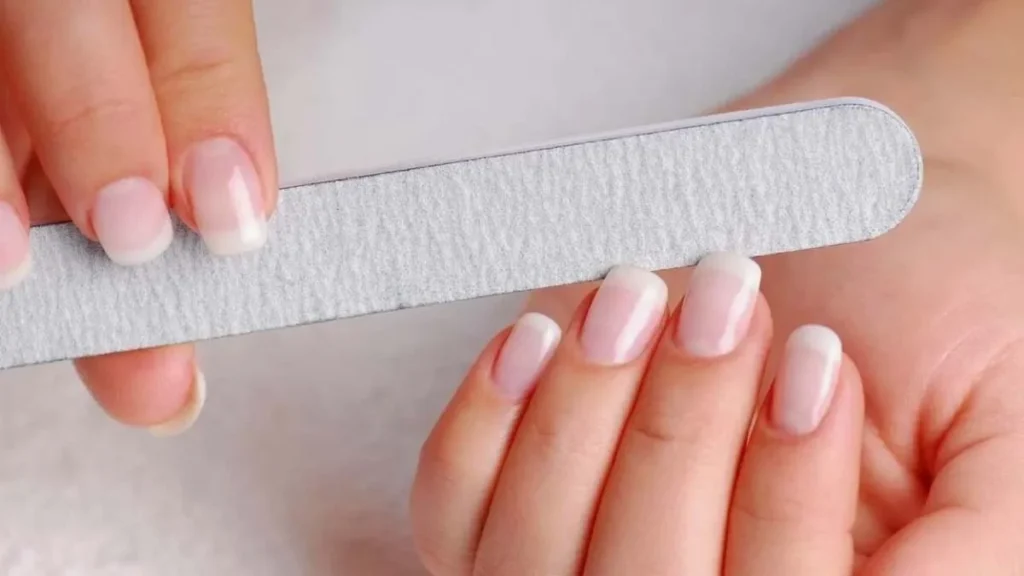A nail file is a tool used to smooth and shape the edges of nails. It is typically used in manicures and pedicures after the nails have been trimmed with an appropriate nail clipper. Nail files come in various materials, such as emery boards, ceramic, glass, crystal, regular metal, and metal coated with corundum. Different materials offer different filing effects and are suited to various types of nails. Understanding the material of a nail file helps you select the right tool based on your specific needs.

Common Nail File Materials and Their Characteristics
1. Glass Nail Files
Glass nail files are usually made from strengthened glass and have a smooth surface, providing a gentle and effective filing action. They are particularly ideal for delicate or fragile natural nails and will not cause any damage or splitting.

Advantages:
- Gentle and does not damage nails.
- Does not accumulate bacteria, maintaining hygiene.
- Long-lasting, can be used for many years with proper care.
Disadvantages:
- Fragile and can break if dropped.
Glass Nail File Characteristics:
| Feature | Glass Nail File |
|---|---|
| Material | Reinforced Glass |
| Suitable for | Delicate, fragile natural nails |
| Advantages | Gentle, long-lasting |
| Disadvantages | Fragile, requires careful handling |
| Recommended Use | Ideal for everyday use, especially for fragile nails |
2. Metal Nail Files
Metal nail files are typically made from stainless steel, offering strong durability and are best suited for thicker or harder nails. They have a rough filing texture that allows for efficient shaping.

Advantages:
- Durable and suitable for daily use.
- Effective for shaping thicker artificial nails or rough natural nails.
Disadvantages:
- May damage the nail surface or nail bed if used incorrectly.
Metal Nail File Characteristics:
| Feature | Metal Nail File |
|---|---|
| Material | Stainless Steel |
| Suitable for | Thick nails or artificial nails |
| Advantages | Durable, sturdy, suitable for daily use |
| Disadvantages | Can damage nails if used incorrectly |
| Recommended Use | Shaping thick nails or artificial nails |
3. Emery Board Nail Files
Emery board nail files are typically made from paperboard or wood and coated with sandpaper or silicon grit. These are the most common and affordable type of nail file, making them ideal for daily use.

Advantages:
- Affordable and easy to access.
- Lightweight and portable, ideal for on-the-go use.
- Available in various grit sizes to suit different filing needs.
Disadvantages:
- Sandpaper wears down with frequent use and needs to be replaced regularly.
Emery Board Nail File Characteristics:
| Feature | Emery Board Nail File |
|---|---|
| Material | Paperboard/Wood + Sandpaper |
| Suitable for | Suitable for all nail types, especially general natural nails |
| Advantages | Affordable, lightweight, portable |
| Disadvantages | Sandpaper wears down and needs replacing |
| Recommended Use | On-the-go use or daily filing |
4. Sapphire Nail Files
Sapphire nail files are made from materials coated with sapphire grit, which provides a gentle and effective filing action. They can efficiently shape nails without causing damage to fragile nails.

Advantages:
- Gentle and effective, ideal for fragile nails.
- Durable and long-lasting.
Disadvantages:
- More expensive compared to other types of nail files.
Sapphire Nail File Characteristics:
| Feature | Sapphire Nail File |
|---|---|
| Material | Sapphire Grit Coating |
| Suitable for | Fragile nails |
| Advantages | Gentle, effective, long-lasting |
| Disadvantages | Higher price |
| Recommended Use | Ideal for delicate or fragile nails |
5. Ceramic Nail Files
Ceramic nail files are made from ceramic materials, with a very smooth surface ideal for fine filing. The grit on ceramic files is fine, which makes them effective for smoothing and shaping nail edges without causing damage.

Advantages:
- Smooth and gentle, perfect for delicate nails.
- Durable, easy to clean, and long-lasting.
Disadvantages:
- More expensive compared to other nail file types.
Ceramic Nail File Characteristics:
| Feature | Ceramic Nail File |
|---|---|
| Material | Ceramic |
| Suitable for | Natural nails |
| Advantages | Smooth, gentle, ideal for fragile nails |
| Disadvantages | Higher price |
| Recommended Use | Shaping delicate or brittle nails |
Do Nail Files Peel Off?
A common question, especially for emery board nail files, is whether they peel off or shed. Emery board nail files can indeed start to peel or wear down over time, especially with frequent use. This is due to the relatively soft nature of sandpaper, which can be worn away with friction. To avoid this issue, it’s recommended to replace emery board files regularly and, if necessary, opt for more durable materials such as metal, glass, or ceramic nail files that tend to last longer without peeling or shedding.

Common Questions:
- Do emery board nail files shed grit?
Yes, after prolonged use, emery board nail files may lose grit, particularly if they are of lower quality. Choosing higher-quality emery boards can help extend their lifespan.
How to Choose the Right Nail File?
Choosing the right nail file depends on your nail type and filing needs. Here are some suggestions:
- For delicate or fragile nails: Choose glass nail files or ceramic nail files for their gentle filing action.
- For thick nails or artificial nails: Opt for metal or sapphire nail files, which are better suited for hard nails.
- For everyday use or portability: Consider emery board nail files, which are lightweight and affordable for on-the-go use.
Choosing the Right Grit Size
The grit of the file will impact its filing action:
- Coarse Grit (60-100): Ideal for thick nails or artificial nails.
- Medium Grit (100-180): Suitable for general filing and shaping.
- Fine Grit (180-240): Perfect for finishing and smoothing.
How to Maintain Your Nail Files?
To extend the life of your nail file and ensure optimal performance, regular maintenance is essential:
- Regular Cleaning: After each use, clean the nail file surface to prevent dirt and bacteria buildup.
- Proper Storage: Avoid dropping the nail file, especially glass and ceramic files, which can break easily. Store them in a safe place.
- Regular Replacement: When the filing effect diminishes, replace the nail file promptly.
Conclusion
Understanding nail file materials and their characteristics helps you choose the right tool for your nails. Whether it’s the gentle glass nail file or the durable metal nail file, each material has its unique benefits and suitable applications. By selecting the appropriate nail file based on your nail type and needs, you can achieve healthier nails and better filing results.
Moreover, paying attention to nail file maintenance is crucial. Regular cleaning and timely replacement ensure that your tool lasts longer and performs at its best.
As a leading B2B professional beauty tool manufacturer, we offer a wide range of nail care tools and personal care products, designed specifically for salons, spas, retailers, and private label brands. Our nail files are made with premium materials to ensure commercial-grade durability and outstanding performance for your customers. If you require customized or bulk nail files, feel free to contact us – we are here to provide the best solutions tailored to your needs.
FAQ
- What type of nails are glass nail files best suited for?
Glass nail files are especially good for delicate and fragile natural nails. - Can metal nail files damage nails?
Yes, if not used properly, metal nail files can damage delicate nails, so it’s important to use them with care. - How often should I replace an emery board nail file?
Emery board nail files generally need to be replaced after several weeks of use, depending on frequency. - Can ceramic nail files be used for long periods?
Yes, ceramic nail files are highly durable and can be used for extended periods if properly maintained.
